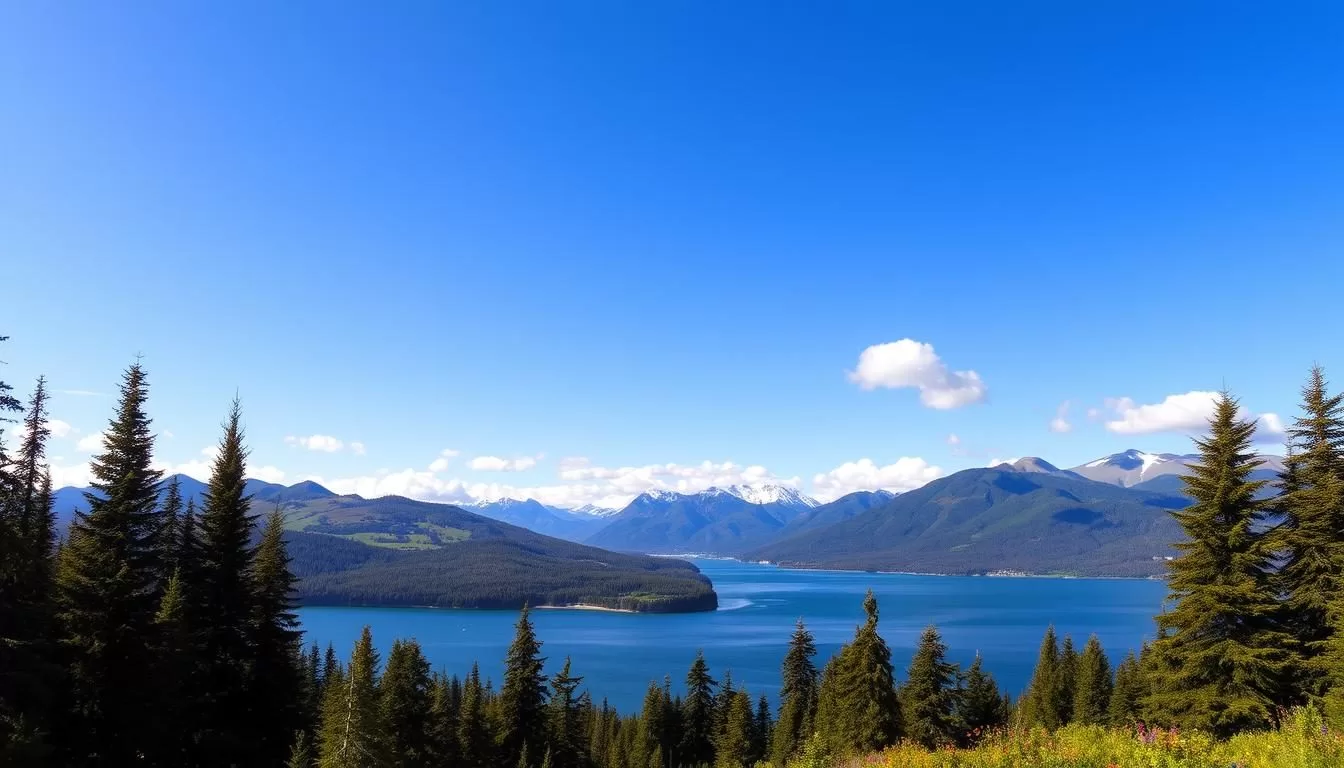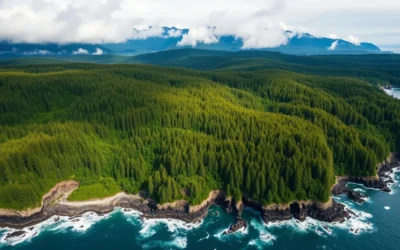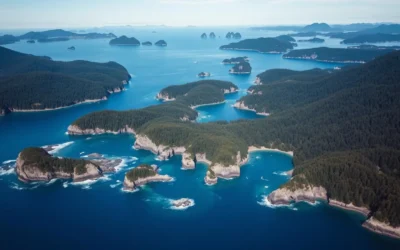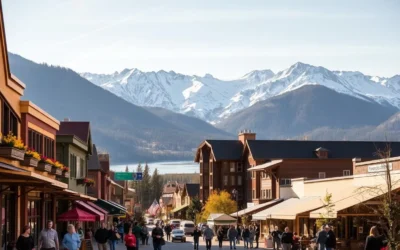✓ Accommodations✓ Flights✓ Rental Cars✓ Tours & Activities
Planning a trip to British Columbia? This stunning province offers a unique blend of urban sophistication and outdoor adventure. Its mild climate makes it a year-round destination, but understanding the best time to visit can make all the difference. Whether you’re exploring the vibrant streets of Vancouver or hiking through its lush forests, timing is key to enjoying your journey.
Packing the right gear is essential. An umbrella and layers are must-haves, as the weather can be unpredictable. This guide will help you navigate temperature trends, local festivals, and even the best hotels to stay in. With over 27,000 km of coastline and 400 provincial parks, there’s no shortage of places to explore.
From summer hikes to cozy winter retreats, this article breaks down each season with actionable advice. You’ll also discover hidden gems in the city and practical tips for planning your itinerary. Ready to make the most of your trip? Let’s dive in!
Understanding British Columbia’s Climate & Seasons
Exploring the diverse climate of this region can enhance your travel experience. The weather here is shaped by its coastal location, creating a unique blend of mild temperatures and seasonal changes. Whether you’re planning a summer hike or a cozy winter retreat, understanding these patterns ensures you’re prepared for every moment of your adventure.
Overview of Temperature Trends Throughout the Year
Summer brings warm days, with average highs reaching 72°F (22°C) in July and August. Winter, on the other hand, is mild, with January temperatures averaging 37°F (2°C). This balance makes it an ideal destination for outdoor activities year-round. Even in the coldest months, the city rarely sees freezing temperatures, ensuring comfortable exploration.
Rainfall Patterns and Coastal Influences
The coastal position creates a microclimate characterized by significant rainfall, especially in November. Summers are relatively dry, while winters are wetter, supporting the lush greenery of the temperate rainforest. This unique weather pattern adds to the region’s charm, making it a haven for nature lovers.
Seasonal Variations: Winter, Spring, Summer, and Fall
Each season offers distinct experiences. Spring brings blooming landscapes and mild temperatures, while fall showcases vibrant foliage and cooler days. Summer is perfect for beach days and outdoor festivals, and winter invites cozy indoor activities and occasional snow adventures. Understanding these variations helps you plan your day-to-day itinerary with ease.
The world-class balance between natural conditions and urban life here ensures every visit is memorable. Whether you’re chasing sunny skies or embracing rainy days, the weather adds a dynamic layer to your journey.
What Makes a Weather-Savvy Trip in British Columbia Unique?
Discover why timing your visit can transform your travel experience. This region’s microclimates and seasonal shifts create a dynamic landscape that changes every month. Whether you’re a seasoned traveler or planning your first trip, understanding these patterns ensures you make the most of your journey.
The area’s coastal and mountainous terrain results in varied weather conditions. For example, January temperatures average 32°F, while July and August reach highs of 55°F. These shifts mean you can enjoy snow-capped mountains in winter and sunny beaches in summer—all within the same destination.

Knowing the best time to visit is key to maximizing outdoor fun. November, the wettest month, sees 6.5 inches of rainfall, while July and August are drier with just 1.4 inches. This knowledge helps you plan activities like coastal festivals or mountain hikes without unexpected weather surprises.
Here’s a quick guide to seasonal highlights:
| Season | Temperature Range | Rainfall | Activities |
|---|---|---|---|
| Winter | 32°F – 44°F | High | Skiing, cozy retreats |
| Spring | 38°F – 48°F | Moderate | Blooming landscapes, hiking |
| Summer | 55°F – 72°F | Low | Beach days, festivals |
| Fall | 45°F – 52°F | Increasing | Foliage tours, wine tasting |
Seasoned travelers often optimize their trips by aligning their itineraries with local weather patterns. For instance, summer’s long daylight hours—up to 16 hours in June—are perfect for extended outdoor adventures. Meanwhile, winter’s shorter days invite cozy indoor activities and snowy escapades.
Personalized itineraries cater to weather-savvy needs, ensuring you experience the destination’s best. From coastal festivals to mountain adventures, every month offers a fresh perspective. By understanding these unique conditions, you can craft a trip that’s as dynamic as the region itself.
Optimal Packing and Layering Tips for Every Season
Smart packing is the key to enjoying every moment of your journey. Whether you’re exploring lush forests or strolling through vibrant streets, being prepared for changing weather ensures a smooth trip. Here’s how to pack like a pro for any season.
Essential Clothing and Gear for Changing Weather
Layering is your best friend in this region. Start with a moisture-wicking base layer, like merino wool or polyester, to keep you dry during outdoor activities. Add a lightweight fleece mid-layer for warmth, and top it off with a waterproof jacket to stay dry during unexpected rain showers.
Don’t forget an umbrella—it’s a must-have accessory given the frequent rain. Pair it with waterproof gumboots to keep your feet dry while exploring. Breathable fabrics and moisture-wicking materials ensure comfort, no matter the temperature.
Packing Smart for Outdoor and Urban Adventures
For outdoor adventures, prioritize versatile gear. Pack two t-shirts for rotation and opt for shorts with moisture management features. Sturdy hiking shoes with good traction are essential for warm-weather hikes.
Urban outings call for a balance of comfort and style. Choose lightweight layers that adapt from rain to sunshine. A waterproof jacket and breathable shoes will keep you ready for anything, whether you’re exploring a bustling street or enjoying a local festival.
| Season | Essential Items | Tips |
|---|---|---|
| Spring | Waterproof jacket, layers, gumboots | Be ready for rain and mild temperatures |
| Summer | Breathable t-shirts, shorts, hiking shoes | Pack light for warm weather activities |
| Fall | Fleece mid-layer, waterproof gear | Layer up for cooler days |
| Winter | Insulated jacket, base layers, warm boots | Stay cozy during snowy adventures |
Planning ahead for weather variations can enhance your travel day. With these tips, you’ll be prepared for any activity, whether it’s a hike in the mountains or a stroll through the city. Pack smart, and enjoy every moment of your journey!
British Columbia, Canada: Best Months for a Weather-Savvy Trip
Choosing the right month for your visit can make all the difference in your travel experience. Whether you’re chasing sunny skies or embracing cozy rainy days, timing your trip ensures you enjoy the best of what this region has to offer.
Summer is the peak travel season, with July and August offering warm temperatures averaging 72°F (22°C). These months are perfect for outdoor festivals, beach days, and exploring vibrant streets. However, they also attract larger crowds, so booking your hotel early is essential.
Spring and fall are quieter times to visit, with milder weather and fewer tourists. April and May bring blooming landscapes, while September and October showcase stunning fall foliage. These months are ideal for scenic hikes and enjoying local streets without the hustle and bustle.
Winter offers a unique charm, with January temperatures averaging 37°F (2°C). It’s a great time for cozy indoor activities and occasional snowy adventures. Plus, you’ll find better hotel deals and fewer crowds during this season.
Here’s a monthly breakdown to help you plan your trip:
| Month | Average Temperature | Rainfall | Highlights |
|---|---|---|---|
| April | 48°F (9°C) | Moderate | Blooming landscapes, fewer crowds |
| July | 72°F (22°C) | Low | Outdoor festivals, beach days |
| October | 52°F (11°C) | Increasing | Fall foliage, wine tasting |
| January | 37°F (2°C) | High | Cozy retreats, snowy adventures |
Every season offers a different but equally rewarding experience. Knowing the best time to travel ensures a smoother day-to-day experience, whether you’re exploring bustling streets or relaxing in a cozy hotel.
Plan your itinerary around these monthly highlights to make the most of your trip. From sunny July days to gentle fall afternoons, there’s always something special to discover.
Seasonal Activities and Outdoor Adventures in Vancouver and Beyond
From sandy beaches to snowy peaks, Vancouver’s seasonal activities are unmatched. Each time of year offers a unique way to explore this stunning destination. Whether you’re chasing the sun or embracing the snow, there’s always an adventure waiting.
Summer Beach Days and Water-Based Fun
Summer in Vancouver is all about soaking up the sun. With average temperatures reaching 72°F (22°C) in July and August, it’s the perfect time for beach days and water sports. Head to Long Beach, a 16km stretch of sand in Pacific Rim National Park, for surfing or simply relaxing by the waves.
For more water-based fun, try canoeing or kayaking along the city’s scenic waterways. Cox Bay, known for hosting surfing competitions, is a hotspot for thrill-seekers. Don’t forget to pack your sunscreen and swimsuit for these sunny adventures.
Winter Sports and Snow Experiences
When winter arrives, Vancouver transforms into a snowy wonderland. Nearby ski resorts like Grouse Mountain and Whistler Blackcomb offer world-class slopes. Whistler boasts a vertical drop of 500 meters and receives up to 10 meters of snowfall each season.
Even if you’re not a skier, there’s plenty to enjoy. Try snowshoeing, tubing, or simply cozying up by a fire with a hot drink. The ski season extends through May, giving you ample time to experience the magic of the mountains.
| Season | Activities | Highlights |
|---|---|---|
| Summer | Beach days, surfing, canoeing | Long Beach, Cox Bay |
| Winter | Skiing, snowshoeing, tubing | Grouse Mountain, Whistler Blackcomb |
Planning your activities around the weather ensures you make the most of your trip. Whether it’s a summer hike or a winter ski adventure, Vancouver’s diverse landscapes offer endless possibilities.
Planning Your Itinerary: When to Ski, Hike, and Explore
Crafting the perfect itinerary ensures you make the most of every moment. Whether you’re hitting the slopes or exploring scenic trails, timing is key to a seamless experience. This guide will help you balance outdoor adventures with urban exploration, ensuring you enjoy every day of your trip.
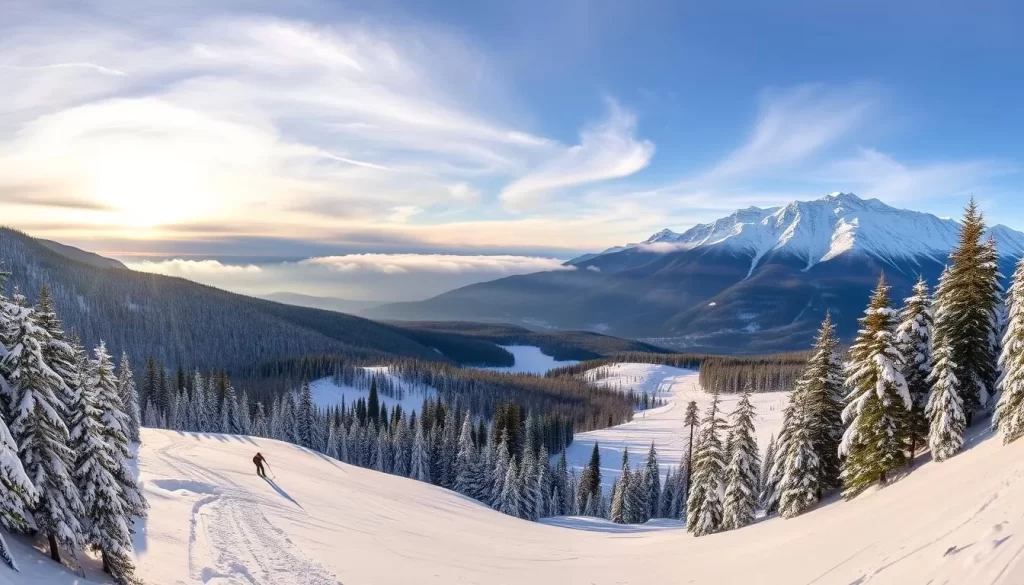
Ski Season Insights and Mountain Destinations
The ski season typically runs from December through February, offering pristine slopes and breathtaking views. Popular destinations like Grouse Mountain and Whistler Blackcomb are perfect for both beginners and seasoned skiers. To avoid crowds, plan your visit on weekdays or early mornings.
For a unique experience, consider combining skiing with other activities. Many resorts offer après-ski options, from cozy lodges to vibrant nightlife. Staying at a nearby hotel ensures you’re close to the action while enjoying comfortable amenities.
Hiking, Biking, and Scenic Trails
Spring and summer are ideal for exploring the region’s trails. The Sea to Sky Highway offers stunning routes for hiking and biking, with options for all skill levels. For a memorable day, pack a picnic and take in the panoramic views along the way.
If you’re visiting in fall, don’t miss the vibrant foliage tours. These trails transform into a colorful wonderland, making it the perfect time for photography and leisurely walks. Pair your outdoor adventures with a stay at a lodge or inn for a complete experience.
Planning your itinerary with this guide ensures you enjoy every thing the region has to offer. From snowy slopes to lush trails, there’s always something to explore. For more tips on summer activities, check out this Whistler summer guide.
Navigating Rainy Days: Tips for Staying Dry in Vancouver
Rainy days in Vancouver don’t have to dampen your spirits—they can be an opportunity to explore the city in a new light. With an average of 165 rainy days per year, it’s wise to be prepared. Whether you’re strolling through vibrant streets or seeking shelter indoors, these tips will help you make the most of your time.
Choosing the Best Rain Gear and Waterproof Footwear
Investing in high-quality rain gear is essential. A sturdy umbrella and waterproof jacket are must-haves for staying dry. Pair these with waterproof footwear, like gumboots, to keep your feet comfortable while exploring the city.
Layering is also key. Opt for moisture-wicking fabrics that keep you warm without feeling bulky. This way, you can adapt to changing weather conditions throughout the day.
How to Enjoy Indoor Attractions on Cloudy Days
When the rain pours, Vancouver’s indoor attractions shine. Visit the Capilano Suspension Bridge, which offers a unique vantage point even on wet days. Or explore the city’s 2,800 parks, many of which have sheltered areas perfect for a quick break.
Cultural spots like museums and art galleries are also great options. They provide a chance to learn about the city’s history and creativity while staying dry. For more travel tips for navigating Vancouver, check out this guide.
Even on a rainy minute, Vancouver’s charm is undiminished. With the right gear and a flexible itinerary, you can turn a cloudy day into a memorable adventure. Embrace the weather, and you’ll discover a side of the city that’s just as vibrant as its sunny days.
Exploring Local Festivals and Cultural Highlights
Immerse yourself in the vibrant culture of British Columbia through its local festivals and events. These gatherings celebrate the region’s unique vibe, offering a chance to connect with the community and experience its rich traditions. From blooming cherry blossoms in spring to lively summer markets, there’s always something happening.
One of the most iconic events is the Vancouver Cherry Blossom Festival. Held in April, it transforms the city into a pink wonderland, attracting visitors from around the place. The festival features guided walks, art installations, and cultural performances, making it a must-see for any traveler.
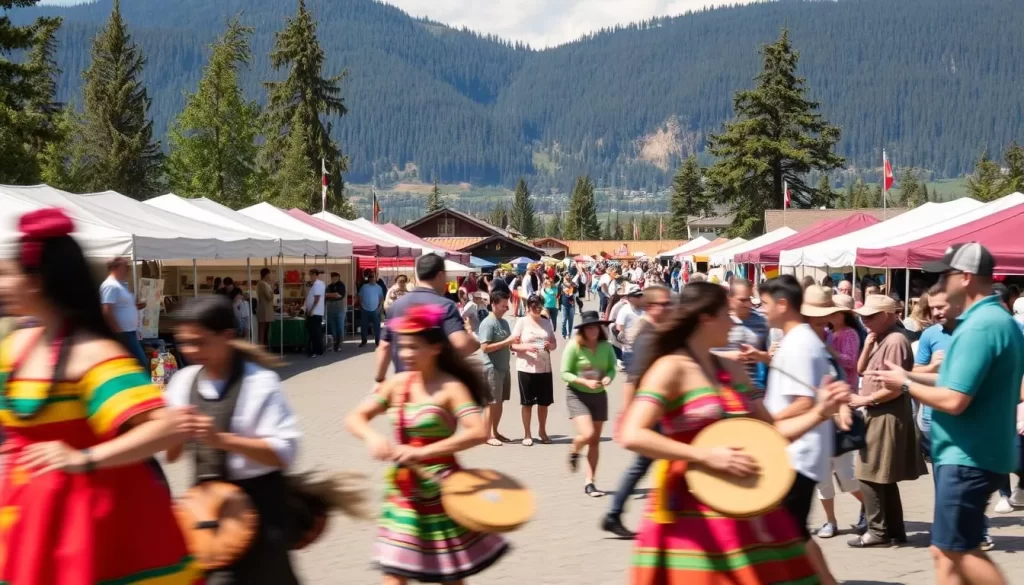
Seasonal events like farmers’ markets also reflect the local culture. These markets showcase fresh produce, handmade crafts, and live music, creating a lively atmosphere. They’re a great way to support local artisans and enjoy the region’s flavors.
Attending these festivals enhances your travel experience by offering a deeper connection to the place. You’ll discover local art, music, and food, all while meeting friendly residents. As one seasoned traveler shared, “Festivals are the heart of any destination—they bring people together and tell its story.”
Understanding festival schedules can help you plan your activity itinerary. For example, September in British Columbia offers comfortable weather and stunning fall foliage, making it an ideal time for outdoor adventures and cultural events. Check out this for more details.
Here’s a quick overview of popular festivals and their highlights:
| Festival | Season | Highlights |
|---|---|---|
| Vancouver Cherry Blossom Festival | Spring | Blooming trees, art installations, cultural performances |
| Farmers’ Markets | Summer | Fresh produce, handmade crafts, live music |
| Fall Foliage Tours | Fall | Scenic trails, vibrant colors, wine tasting |
Exploring these cultural highlights is a key thing that makes your trip memorable. Whether you’re strolling through a cherry blossom path or enjoying a local market, these experiences will leave a lasting impression.
Traveler Insights and Real Stories from British Columbia Visits
Hearing from those who’ve explored the region can provide invaluable insights for your journey. Real stories and tips from seasoned travelers offer a unique perspective, helping you plan a memorable trip. Whether you’re looking for the best hotel or the perfect time visit, these firsthand accounts will guide you.
Quotes and Tips from Seasoned Travelers
One traveler shared, “Staying at a cozy lodge near the mountains made all the difference. Waking up to breathtaking views every morning was unforgettable.” This highlights the importance of choosing the right hotel for your travel experience.
Another tip: “Plan your outdoor activities early in the day. The weather can change in a minute, so flexibility is key.” This advice ensures you make the most of your time, whether you’re hiking or exploring the city.
For those visiting in summer, a traveler recommended, “Don’t miss the local festivals. They’re a great way to experience the culture and meet friendly locals.” This adds a vibrant touch to your itinerary.
Practical Advice for Your Journey
Travelers often emphasize the importance of packing smart. “Layering is essential,” one noted. “The weather can shift unexpectedly, so be prepared for anything.” This tip ensures you stay comfortable throughout your travel day.
For a unique experience, consider exploring the Canadian Rockies. This stunning destination offers breathtaking landscapes and outdoor adventures. Learn more about what to do in this region by checking out this guide to the Canadian Rockies.
Traveler Insights at a Glance
| Tip | Season | Highlights |
|---|---|---|
| Choose a scenic hotel | Year-round | Breathtaking views, cozy stays |
| Plan outdoor activities early | Spring, Summer | Flexibility for weather changes |
| Attend local festivals | Summer | Cultural immersion, friendly locals |
| Pack layers | All seasons | Comfort in unpredictable weather |
These stories and tips serve as a valuable guide for your trip. They highlight the best things to do and see, ensuring you have a seamless and enjoyable experience. Whether you’re exploring during the day or enjoying a quiet night, these insights will help you make the most of your journey.
Pro Tips for Avoiding Crowds and Maximizing Your Experience
Making the most of your trip means finding ways to enjoy exclusive experiences without the hassle of crowds. By planning strategically, you can explore popular destinations while still savoring moments of tranquility. Here’s how to make your journey smoother and more enjoyable.
Timing Your Visit to Beat Peak Tourist Seasons
Visiting during shoulder seasons—late spring or early fall—can significantly reduce crowds. These periods offer milder weather and fewer tourists, making it the best time visit for a more relaxed experience. For example, May and September are ideal for outdoor activities without the summer rush.
Adjusting your itinerary by minute can also make a difference. Start your day early to explore popular spots before they get busy. Alternatively, enjoy attractions in the evening when most travelers are winding down. This approach ensures you get the most out of your day.
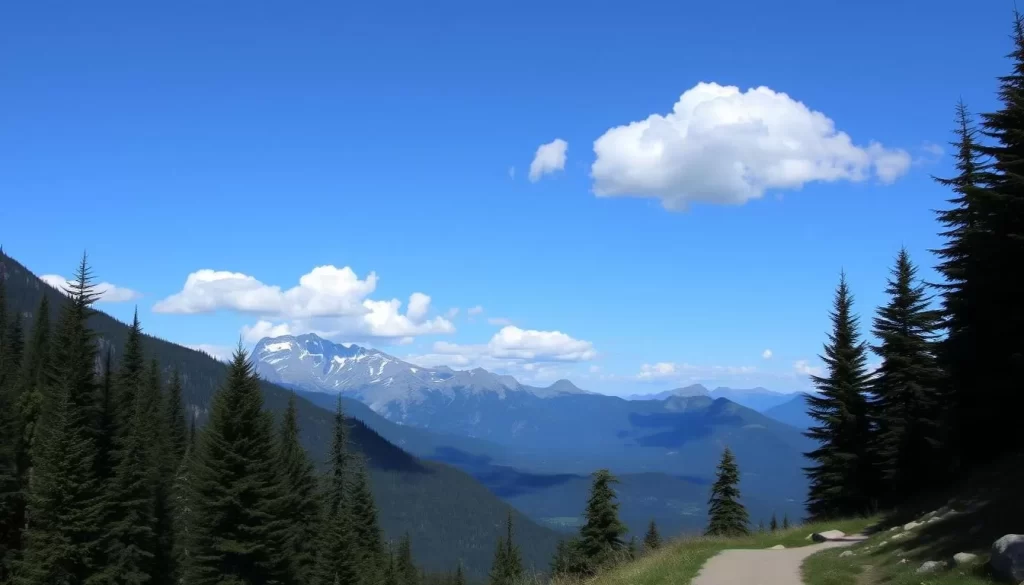
Exploring Quieter Streets and Alternative Attractions
Instead of sticking to well-known landmarks, venture into lesser-known streets and neighborhoods. These areas often offer unique experiences and a more authentic feel. For instance, visiting local markets or hidden trails can be just as rewarding as popular tourist spots.
Securing better hotel deals is another way to enhance your trip. Booking accommodations in quieter areas can save you money and provide a more peaceful stay. Plus, you’ll be closer to local gems that many travelers overlook.
Attending Festivals and Events Strategically
Local festivals are a great way to immerse yourself in the culture, but timing is key. Arriving early or staying late can help you avoid the busiest times. This way, you can enjoy the event without feeling overwhelmed by the crowd.
One traveler shared, “We attended a local festival in the late afternoon and had the best time. The atmosphere was lively, but it wasn’t too crowded.” This tip highlights the importance of thoughtful planning.
Planning Ahead for a Seamless Experience
Thoughtful preparation is the thing that sets a great trip apart. Research quieter routes, like the Sea-to-Sky Highway, which offers stunning views without the heavy traffic. Planning your activities in advance ensures you make the most of your time.
For more tips on how to maximize the experience, check out this detailed guide. By following these strategies, you’ll create a memorable journey that’s both enjoyable and stress-free.
Conclusion
Your journey to this stunning destination starts with the right timing. Choosing the best time to visit ensures you enjoy every day of your trip, whether you’re chasing snow in winter or vibrant fall colors. This guide provides the insights you need to plan your itinerary with confidence.
Accurate temperature and weather data are essential for making informed decisions. From cozy hotel stays to lively festivals, every detail matters. For budget-friendly travel, consider visiting during quieter months like November or January, when you can enjoy lower prices and fewer crowds.
Use this guide as your trusted resource for planning every minute of your trip. Whether you’re exploring during the day or enjoying a peaceful night, thoughtful preparation ensures a seamless experience. Start planning today and make the most of your adventure!
The above is subject to change.
Check back often to TRAVEL.COM for the latest travel tips and deals.
